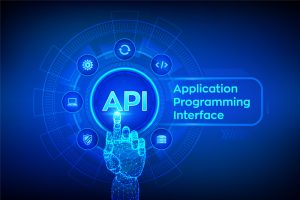The financial landscape has undergone a remarkable transformation with the emergence of blockchain technology and decentralized platforms. The rise of bots trading in cryptocurrency markets represents a significant shift from traditional financial systems to autonomous, code-driven operations that require minimal human intervention. This evolution marks a pivotal transition from centralized exchanges, where third parties control transactions, to decentralized networks where smart contracts and algorithms govern trading activities.
Understanding DeFi Trading Bots

DeFi trading bots are autonomous software programs that operate directly on blockchain networks to execute cryptocurrency transactions based on predefined parameters and algorithmic strategies. Unlike conventional trading systems, these bots interact directly with decentralized protocols through smart contracts, eliminating the need for intermediaries and centralized control mechanisms.
These sophisticated programs continuously monitor market conditions across decentralized exchanges (DEXs) to identify profitable trading opportunities. By leveraging blockchain technology, DeFi bots can execute complex strategies including arbitrage, yield farming, and liquidity provision without requiring centralized approval or oversight.
The technological architecture of DeFi bots represents a fundamental departure from traditional automated trading systems. While conventional software operates within closed environments, DeFi bots function on transparent, open-source blockchain networks where all transactions are verifiable and immutable.
DeFi Bots vs. Traditional Trading Bots
Traditional trading bots operate within the strict parameters of centralized exchange platforms such as Binance, Coinbase, and Kraken. These conventional bots must adhere to the specific API limitations, trading rules, and security protocols imposed by these exchanges.
In contrast, DeFi trading bots interact directly with blockchain protocols like Ethereum and Binance Smart Chain through smart contracts. This direct blockchain integration provides several distinctive advantages:
- Custodial independence: DeFi bots connect directly to users’ wallets without requiring fund deposits to third parties
- Censorship resistance: Transactions cannot be blocked by any centralized authority
- Reduced counterparty risk: No reliance on exchange solvency or security
- Lower fee structures: Elimination of intermediary commissions
The operational autonomy of DeFi bots represents a philosophical alignment with the core principles of blockchain technology: decentralization, transparency, and user sovereignty.
Key Advantages of Automated DeFi Trading

Automated trading systems in decentralized finance environments offer several compelling advantages that have fueled their rapid adoption among cryptocurrency investors globally.
The primary advantage lies in execution speed and precision. DeFi bots can analyze market conditions and execute transactions in milliseconds—far faster than any human trader. This capability is particularly valuable in cryptocurrency markets where price volatility can create and eliminate profit opportunities within seconds.
Another significant benefit is the 24/7 operational capability. Unlike traditional markets that close, cryptocurrency markets function continuously. DeFi bots can monitor market conditions around the clock and respond to price movements during any time zone.
The removal of emotional decision-making represents a third crucial advantage. By adhering strictly to predefined parameters, DeFi bots eliminate the psychological biases that often plague human traders—fear, greed, and impulsive reactions to market noise.
Finally, DeFi bots enable sophisticated risk management through automated stop-loss mechanisms, position sizing algorithms, and diversification strategies implemented programmatically across multiple protocols.
How DeFi Trading Bots Function
The operational sequence of DeFi trading bots typically follows a specific pattern, beginning with blockchain connectivity and concluding with transaction execution.
The process starts with smart contract interactions. DeFi bots connect to blockchain networks through node providers, establishing communication channels with relevant smart contracts on platforms like Ethereum, Polygon, or Avalanche.
Following connectivity establishment, users configure specific trading rules, threshold values, and algorithmic strategies that govern the bot’s decision-making process. These might include price thresholds, slippage tolerance, gas price limits, and portfolio allocation parameters.
Wallet integration enables the bot to initiate transactions on behalf of the user without requiring direct custody of funds—a significant security advantage over centralized alternatives.
Market monitoring functions continuously as the bot analyzes on-chain data, oracle feeds, and decentralized exchange liquidity pools to identify optimal trading opportunities.
When predetermined conditions are met, the bot executes transactions by submitting signed messages to the blockchain network, automatically swapping assets or implementing complex trading strategies without manual intervention.
Qualities of Effective DeFi Trading Bots
Three fundamental characteristics distinguish exceptional DeFi bots from mediocre alternatives.
Execution accuracy stands as the primary quality determinant. An effective bot must reliably implement trading strategies exactly as configured, with minimal deviation from intended parameters.
Minimal latency represents the second critical characteristic. In decentralized markets where price movements occur rapidly, transaction speed creates a significant competitive advantage through optimized code execution, efficient mempool management, and strategic node selection.
Operational reliability completes the triad of essential qualities. High-performance DeFi bots must function consistently despite network congestion, gas price volatility, and other blockchain-specific challenges.
Popular Applications of DeFi Trading Bots
Three primary use cases have emerged as the most widely adopted applications for automated trading in decentralized markets.
Arbitrage trading involves identifying and exploiting price discrepancies between different decentralized exchanges or liquidity pools. When an asset trades at different prices across platforms, an arbitrage bot can automatically purchase from the lower-priced venue and sell on the higher-priced one.
Automated yield farming involves programmatically moving assets between various lending protocols, liquidity pools, and staking opportunities to maximize returns. These bots continuously monitor interest rates and incentive rewards across platforms to optimize capital allocation.
Portfolio management bots maintain predefined asset allocations through automated rebalancing, executing trades to restore target allocations when they drift beyond specified thresholds while maintaining desired risk levels.
Types of Crypto Trading Bots in the Market
The cryptocurrency ecosystem features diverse bot categories designed for specific trading approaches.
Trend-following bots analyze price patterns and technical indicators to identify directional market movements, typically employing moving averages, momentum indicators, and breakout detection algorithms.
Arbitrage bots monitor multiple trading venues to exploit momentary price discrepancies, either across exchanges or between related assets on the same platform.
Market-making bots contribute to exchange liquidity by simultaneously placing buy and sell orders at different price levels, profiting from the spread between bid and ask prices.
Portfolio management bots implement longer-term strategies focused on asset allocation rather than frequent trading, automatically rebalancing holdings according to predetermined ratios.
Scalping and high-frequency trading bots represent more advanced categories, executing numerous small-margin trades with sophisticated execution algorithms optimized for speed and efficiency.
Selecting the Right Trading Bot
Choosing an appropriate DeFi trading bot requires evaluating multiple factors beyond simple performance metrics.
When assessing features, consider compatibility with your preferred protocols and blockchain networks, supported trading strategies, customization options, and user interface quality.
Security represents a non-negotiable consideration. Verify that the bot implements secure wallet integration methods that don’t require surrendering private keys, and examine the code audit history and team reputation.
Strategy customization capabilities significantly impact long-term utility, particularly whether the bot allows parameter adjustments, strategy combinations, or custom script implementation.
Support resources and community engagement provide indicators of project sustainability through active development, responsive support channels, and educational resources.
Conclusion: The Future of Decentralized Automated Trading
DeFi trading bots have fundamentally transformed cryptocurrency trading by democratizing access to sophisticated algorithmic strategies previously available only to institutional investors. Through automation, these systems enable 24/7 market participation with consistent strategy execution unaffected by emotional biases.
As decentralized finance continues maturing, trading bot capabilities will likely expand to incorporate more advanced machine learning models, cross-chain operations, and integration with traditional finance systems, further empowering individual traders within the emerging decentralized financial ecosystem.





